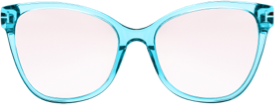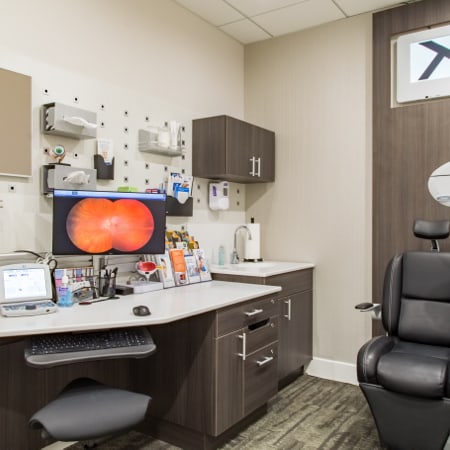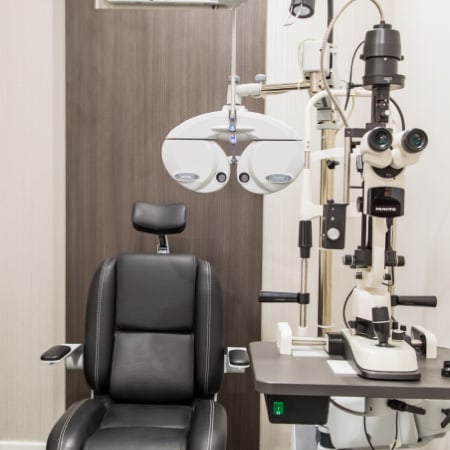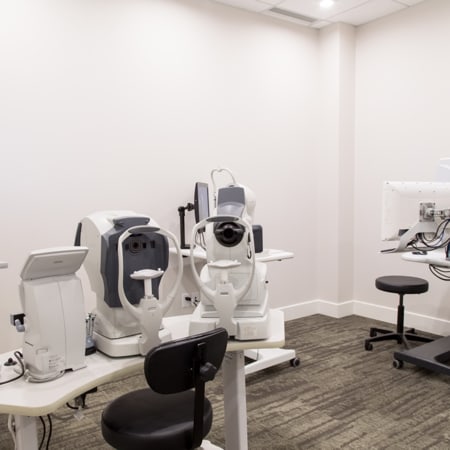You’re staring at your computer screen, and that familiar ache starts building behind your eyes. Within minutes, a dull headache spreads across your forehead. This scenario plays out for millions of people daily, leaving them wondering if their eye discomfort connects to their head pain. Knowing when it’s time to visit your optometrist can make all the difference between treating simple strain and catching a deeper eye issue early.
Yes, eye strain can cause headaches through muscle tension that spreads from your overworked eye muscles to surrounding areas in your head and neck. When you force your eyes to work harder than they should, the resulting fatigue triggers a chain reaction that often ends in head pain.
How Eye Strain & Headaches Are Connected
Eye strain triggers headaches through muscle tension around your eyes and forehead. When you overwork your eye muscles, the strain spreads to nearby muscles in your head and neck. This connection explains why many people experience both symptoms together.
Your eye muscles control focus and movement throughout the day. When these muscles become fatigued from excessive use or strain, they tighten and create tension. This tension doesn’t stay isolated, it radiates outward to your temples, forehead, and the base of your skull. Regular eye exams make it easier to identify what’s behind recurring headaches and eye tension before they worsen.
Common Eye Strain Symptoms
- Tired, burning, or itching eyes
- Blurred or double vision
- Increased light sensitivity
- Neck and shoulder tension
- Difficulty focusing
Digital Screens & Computer Vision Syndrome
Extended screen time reduces your blink rate and forces your eyes to work harder. Computer vision syndrome affects millions of people who spend hours looking at digital devices. Your eyes struggle to focus on pixelated text and images, creating fatigue that leads to headaches.
When you look at screens, your eyes constantly refocus to process digital information. This continuous adjustment can fatigue your eye muscles, much like holding a weight for an extended period. Factors like glare, contrast, and reduced blinking during screen use can also contribute to strain. Following the 20-20-20 rule—taking a 20-second break to look 20 feet away every 20 minutes—can help ease digital eye strain and support visual comfort.
Why Screens Strain Your Eyes
Prolonged screen use challenges your eyes in several ways. You blink less often when focusing on digital content, which can lead to dryness and irritation. Glare, improper lighting, and poor screen positioning can also force your eyes to work harder to maintain clear focus. Over time, this added effort contributes to eye strain and fatigue.
Signs You Have Computer Vision Syndrome
- Headaches after screen use
- Dry or watery eyes
- Blurred vision when looking away from screens
- Eye discomfort during or after computer work
Vision Problems That Cause Eye Strain
Uncorrected vision problems force your eyes to work harder than necessary. Refractive errors like nearsightedness, farsightedness, and astigmatism can lead to constant strain, headaches, and fatigue, especially during reading or screen use.
When your vision isn’t properly corrected, your eye muscles compensate by working overtime. This extra effort might help you see clearly for a while, but it creates ongoing tension and discomfort. A comprehensive eye exam can identify these subtle changes early and ensure your prescription—whether for glasses or contact lenses—keeps your vision sharp and your eyes comfortable.
Hidden Vision Issues
Many people have subtle vision problems they don’t notice until headaches develop. Presbyopia affects near vision as you age, making close work more difficult. Binocular vision problems prevent your eyes from working together properly. Regular eye exams are key for catching these more subtle issues.
When Vision Changes Develop
Vision can change gradually without obvious symptoms at first. Age-related changes typically begin in your 40s but can start earlier. Eye strain headaches often signal that your current prescription needs updating.

Dry Eye & Headache Connection
Dry eyes can trigger a cycle of irritation and strain that often leads to headaches. When your tear film doesn’t provide enough protection, your eyes become dry, inflamed, and overworked. This added effort can create tension around your eyes and forehead, similar to what happens with digital eye strain.
Your tear film plays an essential role in keeping vision clear and comfortable. When it’s compromised, your eyes struggle to maintain focus—leading to fatigue and discomfort. Advanced treatments, such as IPL therapy for dry eye, can help restore tear balance and provide lasting relief from chronic symptoms.
Dry Eye Symptoms to Watch For
- Gritty or sandy feeling in your eyes
- Excessive tearing or watery eyes
- Redness and irritation
- Difficulty wearing contact lenses
- Fluctuating vision throughout the day
Environmental Factors That Worsen Dry Eye
Air conditioning, heating systems, and low humidity reduce tear quality. Wind, smoke, and dust particles irritate already sensitive eyes. Certain medications can decrease tear production and worsen symptoms. Understanding dry eye causes and treatments helps manage environmental triggers effectively.
When to Seek Professional Eye Care
Comprehensive eye exams help uncover the underlying causes of eye strain and headaches. With advanced diagnostic technology, we can detect subtle vision changes or eye health concerns that might otherwise go unnoticed. Proper treatment and updated prescriptions can significantly reduce or even eliminate strain-related headaches.
During your exam, we assess how your eyes work together, measure your focusing ability, and look for conditions that may contribute to discomfort—such as uncorrected vision changes or dry eye. This thorough approach allows us to design a personalized care plan to restore comfort and support long-term visual health.
What Happens During a Comprehensive Eye Exam
Your eye doctor evaluates your vision accuracy and eye muscle coordination. Digital imaging technology reveals detailed information about your eye health. Specialized tests measure tear production and screen quality. Advanced testing like OCT scanning technology provides detailed views of your retinal health.
Treatment Options for Eye Strain
Relieving eye strain starts with identifying what’s causing it—whether it’s an outdated prescription, poor workstation setup, or extended screen use. Once your optometrist pinpoints the source, several effective solutions can help restore comfort and prevent symptoms from returning.
- Update your prescription: Small refractive errors add up during long focus tasks. A current prescription (glasses or contacts) reduces constant compensating and fatigue.
- Purpose-built computer/office lenses: Designed for your working distance(s), these lenses make it easier to switch focus between monitor, laptop, and paperwork.
- Anti-reflective (AR) coatings: Minimize glare and reflections so your eyes don’t fight bright screens or overhead lighting.
- Prism (when appropriate): If subtle alignment issues are contributing, light prism can help your eyes work together more comfortably.
- Workstation ergonomics: Position the top of the screen at or just below eye level, sit about an arm’s length away, reduce harsh overhead light, and control glare.
- Blink and break habits: Follow the 20-20-20 rule and practice full, deliberate blinks to keep the tear film stable.
- Lubrication & hydration: Preservative-free artificial tears and staying hydrated can ease dryness that amplifies strain.
- Environment tweaks: Use a humidifier in dry rooms and increase text size/contrast to reduce effort.
If symptoms persist, a comprehensive eye exam can pinpoint whether the main driver is prescription, focusing/teaming, dryness, or workstation setup—and map the right mix of solutions.
Find Relief from Eye Strain Headaches in Sarnia
If you’re experiencing frequent headaches or eye discomfort, it may be time for a comprehensive eye exam. At Bluewater Optometry, we use advanced diagnostic technology to uncover the root causes of eye strain and provide personalized treatment for lasting relief.
Schedule your eye exam in Sarnia today and take the first step toward clearer, more comfortable vision.















